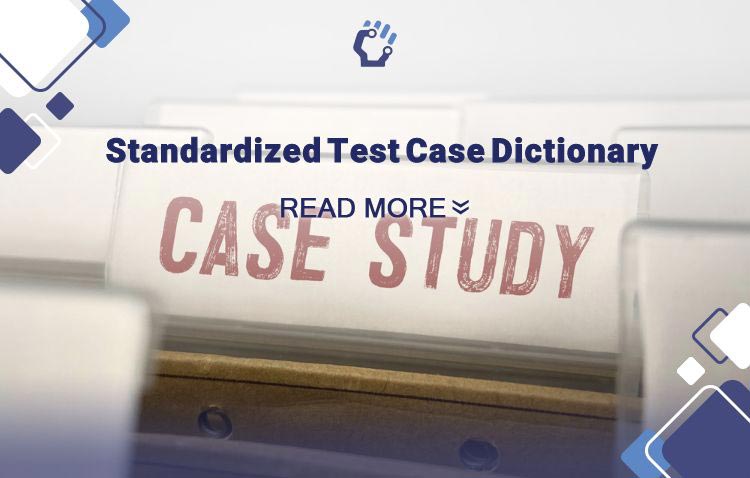In the dynamic world of software quality assurance (QA), consistency and clarity are paramount. One of the fundamental tools for achieving these goals is the creation of a standardized test case dictionary. This dictionary serves as a reference guide for QA teams, ensuring that everyone speaks the same language when it comes to writing test cases. In this essay, we will explore the importance of creating a standardized test case dictionary and provide insights into how to develop and implement one effectively.
The Significance of Standardization
Standardization is a cornerstone of quality assurance. In the context of test cases, it ensures that team members use consistent terminology and approaches, regardless of their individual backgrounds or experiences. The benefits of standardization in test case documentation are manifold:
-
Clarity and Consistency: A standardized dictionary eliminates ambiguity by providing clear and agreed-upon terms for various actions and functions in a software application. When everyone uses the same words and phrases, there is less room for interpretation.
-
Efficiency: Standardization streamlines communication within the QA team and with other stakeholders. It saves time that might otherwise be wasted on clarifying terminology or intentions.
-
Scalability: As QA teams grow or change, new members can quickly become familiar with standardized terms, reducing the learning curve and accelerating productivity.
-
Ease of Maintenance: When everyone adheres to standardized conventions, maintaining and updating test cases becomes more straightforward. Team members can easily understand and modify test cases written by others.

Developing a Standardized Test Case Dictionary
Creating a standardized test case dictionary is a collaborative effort that involves several key steps:
-
Identify Key Actions: Begin by identifying the most commonly used actions or operations in your software application. These actions will form the core of your dictionary.
-
Define Terms: For each identified action, define a standardized term. These definitions should be concise, clear, and easily understood by all team members.
-
Provide Examples: Supplement each term with examples to illustrate its usage. These examples should be relevant to your specific application and demonstrate how the term is applied in test case documentation.
-
Review and Refinement: Involve your QA team in the review process. Encourage feedback and refinement of the dictionary to ensure that it accurately reflects the terminology used in your organization.
-
Documentation: Document the standardized terms, their definitions, and examples in a readily accessible format. This could be a shared document, a wiki page, or a dedicated section in your test case management tool.

Implementing the Dictionary
Developing the dictionary is just the beginning. Implementing it effectively within your QA processes is equally crucial:
-
Training: Conduct training sessions to familiarize your team with the standardized test case dictionary. Ensure that all team members understand its purpose and how to use it.
-
Enforce Usage: Encourage and, if necessary, enforce the use of standardized terms in test case documentation. Consistency is key to the dictionary's success.
-
Regular Updates: Keep the dictionary up to date. Software applications evolve, and new actions or terms may emerge. Ensure that the dictionary remains a living document.
-
Feedback Loop: Maintain an open feedback loop within your team. If team members encounter issues or have suggestions for improvements, address them promptly.
Effect on Automation Testing Development
Automation testing is an integral part of modern software development practices. It involves writing scripts or test cases that can be executed automatically to validate software functionality. The creation of a standardized test case dictionary can greatly benefit automation testing in several ways:
-
Consistency in Automation Scripts: In automation testing, scripts are written to mimic user actions within the software application. By using the same standardized terms as in manual test cases, automation script developers can ensure consistency between manual and automated testing. This alignment makes it easier to map manual test cases to automated scripts and vice versa.
-
Improved Collaboration: Automation testing often involves collaboration between QA engineers, developers, and sometimes even DevOps teams. A standardized dictionary bridges communication gaps, making it easier for different teams to understand and contribute to the automation efforts. Developers, for example, can use the same terminology when writing code to support automation, ensuring alignment with the test cases.
-
Reduced Maintenance Effort: Automated test scripts require maintenance as the application evolves. When standardized terms are used, maintenance becomes more straightforward. If a change is made to the application, it's easier to identify and update relevant test scripts since everyone is using the same terminology. This reduces the likelihood of scripts becoming outdated or inaccurate.
-
Enhanced Reusability: Standardized test case terms promote the reuse of automation components. QA teams can build libraries of automation functions or modules that correspond to the standardized actions. These reusable components can be applied to various test cases, saving time and effort in script development.
-
Facilitated Test Case Generation: Test case generation tools and frameworks often rely on predefined actions or keywords. By aligning these keywords with the standardized terms, automation engineers can leverage such tools more effectively, accelerating test case development.
-
Scalability: As automation suites grow, having standardized terminology becomes increasingly important. It ensures that as new team members join or as automation efforts expand, everyone can quickly understand and contribute to the automation project.
-
Improved Reporting and Analysis: Standardization extends to the reporting of test results. When everyone uses the same terms, it becomes easier to generate meaningful reports and conduct data analysis. This can lead to better-informed decisions about the quality of the software under test.
In summary, a standardized test case dictionary has a profound effect on automation testing development by promoting consistency, collaboration, and efficiency. It streamlines script development, reduces maintenance efforts, and enhances the overall quality of automation testing processes. By integrating this dictionary into your automation testing practices, organizations can maximize the benefits of automation and ensure that it aligns seamlessly with manual testing efforts, ultimately leading to more robust and reliable software products.








